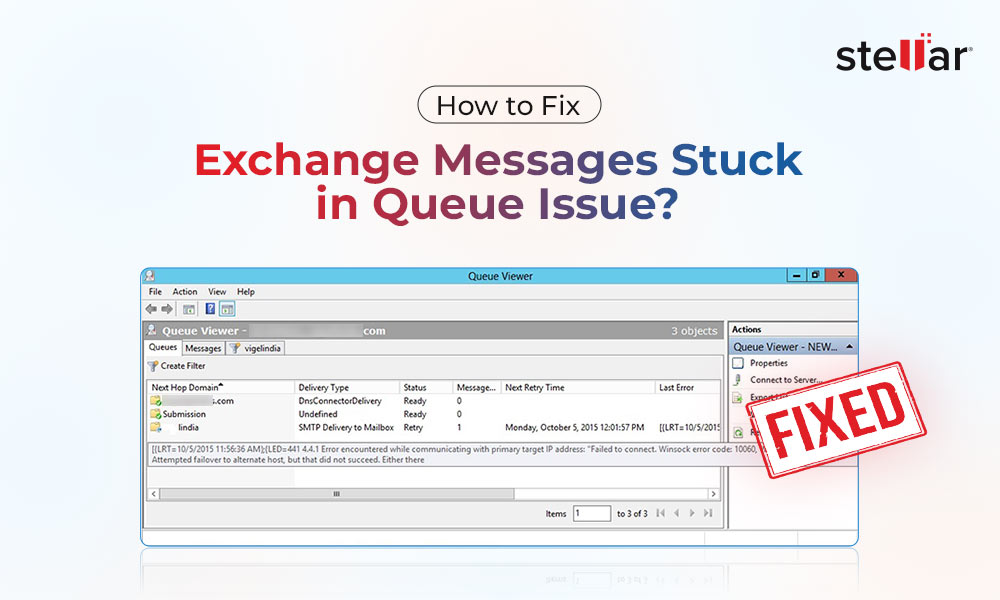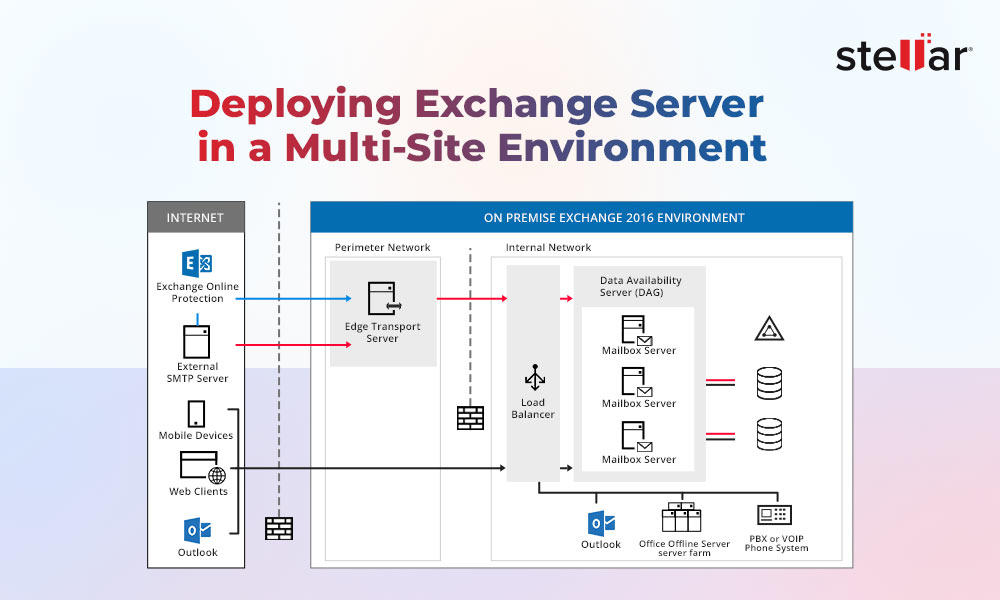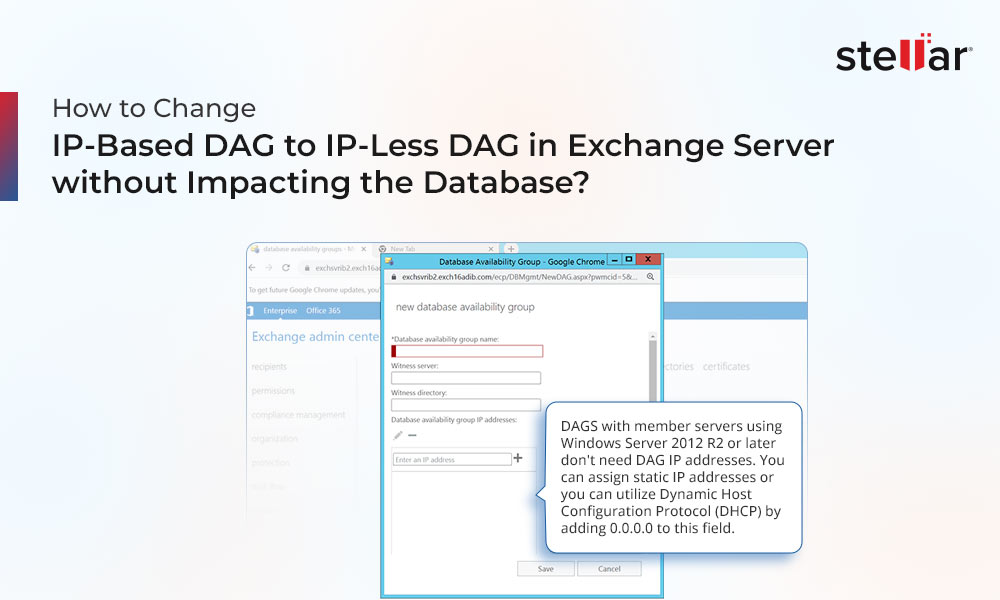The Exchange mailboxes can get corrupted due to improper or abrupt server shutdown, sudden power failure, virus attacks, when moving mailboxes from one database to another, and various other reasons. When a mailbox is corrupted, the user may face issues while accessing their mailbox data. Some common issues include missing mail folders or mail items, delay in sending or receiving emails, problem with search functionality, and inaccessible mail folders. Thus, it is important to repair the corrupted mailbox to facilitate user’s access to mailbox data without any issues. Below, we have discussed some methods that you can use to repair the corrupted mailboxes in the Exchange Server.
Methods to Repair Corrupted Mailboxes in Exchange, 2010, 2013, 2016, and 2019
Here are the methods you can use to repair corrupted mailboxes in Exchange Server.
Method 1: Use the New-MailboxRepairRequest Cmdlet
To repair the corrupted mailbox, you can use the New-MailboxRepairRequest PowerShell cmdlet in Exchange Management Shell (EMS). This cmdlet can fix the below-mentioned corruption issues in a mailbox:
- Search Folder corruption issues.
- Issues with Aggregate Counts on folders that don’t reflect the correct values or number of mail items.
- Issues with views on folders that are not returning accurate content.
- Issues with folders that are not pointing correctly to the parent folders.
Before using this cmdlet, you need to ensure that the Databases and Mail Recipients roles are assigned to the user account you will be using.
Now, to repair a specific mailbox, you can use the New-MailboxRepairRequest cmdlet as given below:
The above command will repair the mailbox for all the corruption types, i.e., SearchFolder, AggregateCounts, ProvisionedFolder, and FolderView.
You can check the status of repair request by using the Get-MailboxRepairRequest cmdlet. When the status of request in the cmdlet output is displayed as Succeeded, this means that the mailbox is repaired successfully.
However, there are a few drawbacks associated with this method. These are:
- Access to the mailbox will be disrupted during the repair period.
- You will be unable to use this cmdlet if the mailbox database is dismounted.
- Once the repair process begins, you cannot stop or pause it. The only way to halt an ongoing mailbox repair is to dismount the mailbox database.
- The cmdlet can be executed for repairing a single database or up to 100 mailboxes.
Method 2: Use an Advanced Exchange Database Repair Tool
Though the New-MailboxRepairRequest cmdlet can repair the corrupted mailboxes, it does not display the progress of repair process. Additionally, it doesn’t provide any option to pause or stop the repair process. As an alternative, you can use Stellar Repair for Exchange. It is an advanced Exchange database repair tool that can repair corrupted Exchange Server database (EDB) files and recover mailboxes and other data, such as archives and shared folders. It allows you to save the recovered mailboxes and data to PST files with complete integrity. Additionally, it can export recovered mailboxes to a database on a live Exchange Server or Microsoft 365 account. The tool supports Exchange Server 2019, 2016, 2013, and earlier versions.
Tips to Prevent Mailbox Corruption in Exchange Server
Using the methods mentioned above, you can repair corrupted Exchange mailboxes. However, to prevent corruption in mailbox in future, you can consider the following tips:
- Ensure that the anti-virus software you’re using is compatible with your Exchange Server and the operating system. An incompatible antivirus software may flag the log files as malicious files and quarantine them.
- Regularly perform maintenance tasks, like database defragmentation, to keep the database size in check and prevent other issues.
- Regularly perform database checksumming to detect physical corruption or lost flushes in the database. When physical corruption is detected, perform page patching to replace the corrupt pages with healthy copies.
Conclusion
Exchange mailboxes or databases can get corrupted due to improper server shutdown, sudden power failure, system shutdown, virus attacks, etc. To repair the corrupted Exchange mailboxes, you can use the New-MailboxRepairRequest cmdlet in Exchange Management Shell (EMS). However, this PowerShell cmdlet has certain limitations (as mentioned in this article). To avoid these limitations, you can use Stellar Repair for Exchange. This software supports all Exchange Server versions - from 5.5 to 2019. It can repair large and severely corrupted databases, recover all the mailboxes, and save them in PST and other formats. It can also export the recovered mailboxes directly to Office 365 or a live Exchange Server with complete integrity.















 5 min read
5 min read





